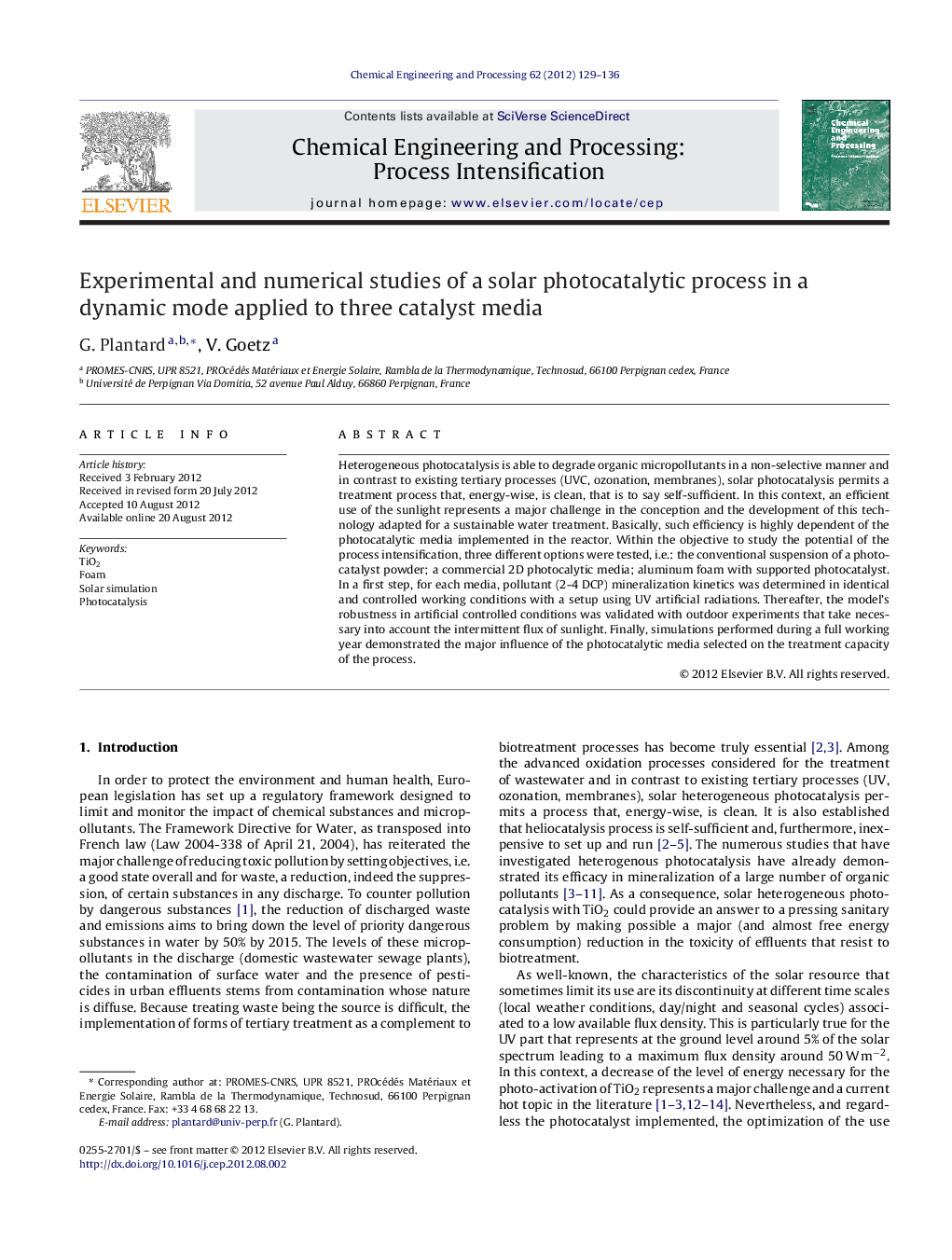| Article ID | Journal | Published Year | Pages | File Type |
|---|---|---|---|---|
| 687345 | Chemical Engineering and Processing: Process Intensification | 2012 | 8 Pages |
Heterogeneous photocatalysis is able to degrade organic micropollutants in a non-selective manner and in contrast to existing tertiary processes (UVC, ozonation, membranes), solar photocatalysis permits a treatment process that, energy-wise, is clean, that is to say self-sufficient. In this context, an efficient use of the sunlight represents a major challenge in the conception and the development of this technology adapted for a sustainable water treatment. Basically, such efficiency is highly dependent of the photocatalytic media implemented in the reactor. Within the objective to study the potential of the process intensification, three different options were tested, i.e.: the conventional suspension of a photocatalyst powder; a commercial 2D photocalytic media; aluminum foam with supported photocatalyst. In a first step, for each media, pollutant (2-4 DCP) mineralization kinetics was determined in identical and controlled working conditions with a setup using UV artificial radiations. Thereafter, the model's robustness in artificial controlled conditions was validated with outdoor experiments that take necessary into account the intermittent flux of sunlight. Finally, simulations performed during a full working year demonstrated the major influence of the photocatalytic media selected on the treatment capacity of the process.
Graphical abstractFigure optionsDownload full-size imageDownload as PowerPoint slideHighlights► Pollutant (2-4 DCP) mineralization kinetics was determined in controlled working conditions. ► Model was validated taking into account the intermittent flux of sunlight. ► Efficiency of the medium was independent of the intensity of the radiation received. ► Simulations demonstrated the major influence of the photocatalytic media selected on the treatment capacity of the process.
